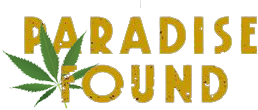One woman’s experience in a clinical trial on ketamine therapy turned into a real Mickey Mouse operation.
In a study published last month in Frontiers in Human Neuroscience, a group of researchers based in Canada sought to “investigate how previous environmental stimuli shaped the experiences of patients receiving ketamine for treatment-resistant depression (TRD), and develop the concept of ‘imprinting’ to account for such time-lagged effects across diverse hallucinogenic drugs.”
“Psychedelic drug experiences are shaped by current-moment contextual factors, commonly categorized as internal (set) and external (setting). Potential influences of past environments, however, have received little attention,” they wrote.
The research team used recordings of treatment sessions and interviews involving 26 participants of the clinical trial, which entailed intravenous ketamine infusions for treatment-resistant depression from January of 2021 until August of 2022.
In detailing the results of the trial, the researchers zeroed in on two participants, a 28-year-old female and a 34-year-old male, whose “subjective ketamine experiences were significantly altered by varying exposures to particular forms of digital media in the days preceding treatments.”
The 34-year-old man described “a pixelated consciousness” while on ketamine, an experience owed to his habit of regularly playing as many as 16 hours of video games a day.
“This patient’s first three ketamine experiences were characterized by vivid visual hallucinations described as ‘videogame-like’ in both content and form. I.e., he reported that most of his time during the infusion was spent reliving recent game experiences and he described ‘pixelated’ complex hallucinations that strongly resembled the aesthetic of video games like Minecraft, which he had played frequently in the days preceding the treatment sessions. He summed up his experiences as evidence that he had ‘a pixelated consciousness,’” the researchers wrote.
The 28-year-old woman’s experience was, well, a whole new world.
“The patient responded robustly to these first two ketamine treatments and described them as having many typical features of psychedelic therapy: feelings of connection, introspection, emotional processing, and mysticism. They resulted in rapid and significant improvements in depressive symptoms and suicidality, and the patient was discharged after six weeks in hospital with the plan for further infusions if necessary,” the researchers wrote in their evaluation of the patient.
“Six months later, as an outpatient enrolled in the aforementioned clinical trial, she received a course of six ketamine infusions over four weeks with the same team, a nearly identical treatment protocol, and a similar treatment setting. Despite reporting a similar degree of psychedelic effects, her first outpatient ketamine treatment was described as having remarkably different phenomenology,” they added. “Namely, the patient reported that involuntary visual hallucinations of Disney iconography ‘hijacked’ her experience, greatly diminishing its mystical and emotional qualities.”
In an excerpt from one of the session’s recordings, the woman is quoted as saying that she “saw Disney stuff” but “didn’t want to.”
“It hijacked it! And it’s my fault for always scrolling through the ‘pins’… I’m just annoyed that I felt like I had the Band-Aid on. It felt like I almost ended up going to important things and then Disney frickin’ covered it up,” the patient said in the recording.
The researchers said that the exchange provides evidence that “the patient readily drew a link between this treatment’s visual images of Disney characters and her previously undisclosed habit of trading commemorative Disney pins on a social media forum.”
“She described spending approximately six hours per day on this digital activity since many years, with the notable exception of her month-long hospitalization when she received her first two ketamine infusions. Of note, she also described various Disney-themed physical objects in her home environment though precise details are not available,” the researchers said.
The post Woman Says Disney Imagery ‘Hijacked’ Her Experience In Ketamine Study appeared first on High Times.
